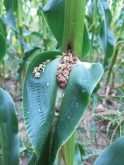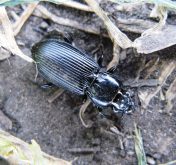“A notorious defoliator of broad-leaved trees.”
A new insect pest has arrived in Manitoba and the government is acting fast to eradicate it before it gains a foothold.
Manitoba Conservation hopes this spring to conduct aerial spraying against the gypsy moth in two areas near Winnipeg where it has been found.
The province wants swift action before the insect becomes established, as it has done in Eastern Canada and the northwestern United States, officials told public meetings last week.
Read Also

Manitoba Ag Days plans star-studded speaker lineup
Dragons’ Den panellist Arlene Dickinson among speaker series highlight for 2026 Manitoba Ag Days in Brandon, alongside slate of agriculture experts.
A handout distributed at the meetings in La Salle and St. Germain described the gypsy moth as “a notorious defoliator of broad-leaved trees in temperate regions.”
The potential damage in Manitoba by the gypsy moth, if left unchecked, is uncertain. But defoliation by gypsy moths could have a major impact on the province’s river bottom and oak/ aspen forests, including urban forests, said Keith Knowles, a Manitoba Conservation forest health biologist.
Longer term, repeated outbreaks of gypsy moths can eventually weaken trees and perhaps even kill them, Knowles said.
It’s not known how gypsy moths spread from the nearest points of infestation in Ontario and eastern Wisconsin to two small sites just south and west of Winnipeg.
But the moth is known to hide in sheltered places and could have travelled here on the insides of vehicle tires or even on camping equipment.
Knowles said the province considered several options for eradicating the gypsy moth from its current locations and preventing its spread throughout the province.
Those included integrated pest management and aerial or ground spraying with various chemicals to kill the insect.
Officials finally decided on aerial applications of Btk, a biological insecticide harmless to fish, birds, mammals and most non-target insects.
Btk acts only on the caterpillar stage of the gypsy moth and must be eaten to be effective. Once it is consumed, toxins are triggered in the gut of the caterpillar, killing it.
Manitoba Conservation hopes to spray two areas: 200 hectares around La Salle and 500 hectares at St. Germain. The department expects to apply three applications, each seven days apart, during the caterpillar stage between late May and late June.
Insect traps will be set out during July and August and egg masses will be surveyed in October to determine effectiveness of the treatment.
The St. Germain area contains a number of nursery and landscape operations. Duayne Friesen, general manager of Lacoste Garden Centre, said if the gypsy moth takes hold, the Canadian Food Inspection Agency will restrict the movement of nursery stock out of the regulated area.
Friesen said a full-blown gypsy moth outbreak could be worse than a tent caterpillar infestation a few years back which stripped whole stands of trees in Winnipeg and eastern Manitoba. [email protected]














